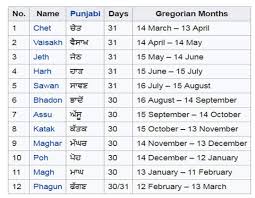The Desi Calendar, also known as the Punjabi Calendar, is an age-old system that is still followed by millions, especially in rural and spiritual communities. But what is the Desi Calendar, how does it work, and how is it different from the globally used Gregorian calendar?
What is the Desi Calendar?
The Desi Calendar is a traditional lunar-solar calendar mainly used in parts of Punjab, India, and Pakistan. It is deeply connected with agricultural seasons, religious festivals, and village traditions. Also referred to as the Punjabi Calendar, it is especially significant in Sikhism and Hinduism.
Each month in the Desi Calendar begins with a natural celestial event such as Sangrand (when the sun changes its zodiac sign). The months are named differently from the English calendar and have cultural meaning.
Desi Punjabi Months:

These months closely follow the seasonal cycle, making the calendar especially important for farmers and religious observers.
How Is the Desi Calendar Different from Other Calendars?
| Feature | Desi Calendar | Gregorian Calendar (International) |
|---|---|---|
| Type | Lunar-Solar | Solar |
| Region | Punjab (India/Pakistan) | Worldwide |
| Months | 12 (Chet to Phagan) | 12 (Jan to Dec) |
| Month Start | Based on solar transition (Sangrand) | Fixed dates |
| Religious Significance | High (Gurpurabs, Puniya) | Moderate |
| Agricultural Link | Strong | Weak |
Unlike the Gregorian calendar, which follows fixed days, the Desi Calendar is flexible and aligned with natural transitions like moon phases and solar movements, which makes it spiritually and agriculturally significant.
Desi Punjabi Date Today
If you’re wondering about the Desi Punjabi date today, it typically differs by 13–15 days from the English date, depending on the month and year. You can find the current date on Punjabi Panchangs, Desi calendars, or mobile apps that track lunar dates.
ਅੱਜ ਦੀ ਤਰੀਖ / Today’s Date
- Gregorian Date: 18 June 2025
- Nanakshahi Date: 4 Harh 557
- Desi Date (Punjabi): 4 ਹਾੜ 557
- Desi Date (Urdu): ٤ ہاڑ ٥٥٧
- Hindu Date: Ashadha Shukla 22 (Saptami)
- Vikram Samvat: 2082 Kalayukta
- Shaka Year: 1947, Jyeshtha 28
What is Sangrand?
Sangrand (ਸੰਗਰਾਂਦ) is the first day of the month in the Desi Calendar and marks the sun’s transition from one zodiac sign to another. It’s considered an auspicious day and is observed by many through:
- Attending Gurdwara services
- Reading or listening to Barah Maha (a spiritual hymn about the 12 months)
- Performing spiritual activities
Sangrand is not just a calendar event, but a cultural reset—a chance to start the month with positive intentions.
What is Puniya?
Puniya (ਪੁੰਨਿਆ), also known as Pooranmashi, is the full moon day in the Desi Calendar. It holds religious significance in both Sikh and Hindu traditions. Devotees often:
- Visit sacred rivers or Gurdwaras
- Offer food or donations
- Meditate or read spiritual texts
Puniya is believed to be a day when good deeds are magnified, and thus, it is considered highly virtuous to help others or perform religious acts.
Why People Still Follow the Desi Calendar Today
Agricultural Importance: Guides farmers for seasonal sowing and harvesting.
Cultural Identity: It helps preserve Punjabi traditions and festivals.
Spiritual Significance: Key Sikh dates (like Gurpurabs) are based on Desi dates.
Community Connection: Many rural communities still follow Desi months in weddings, fairs, and local events.
In Punjab , people still follow desi calenders and Jantri to know about their festivlas, sangrad,puniya and gurpurab.
If you want to know more about desi month of punjab follow here;


